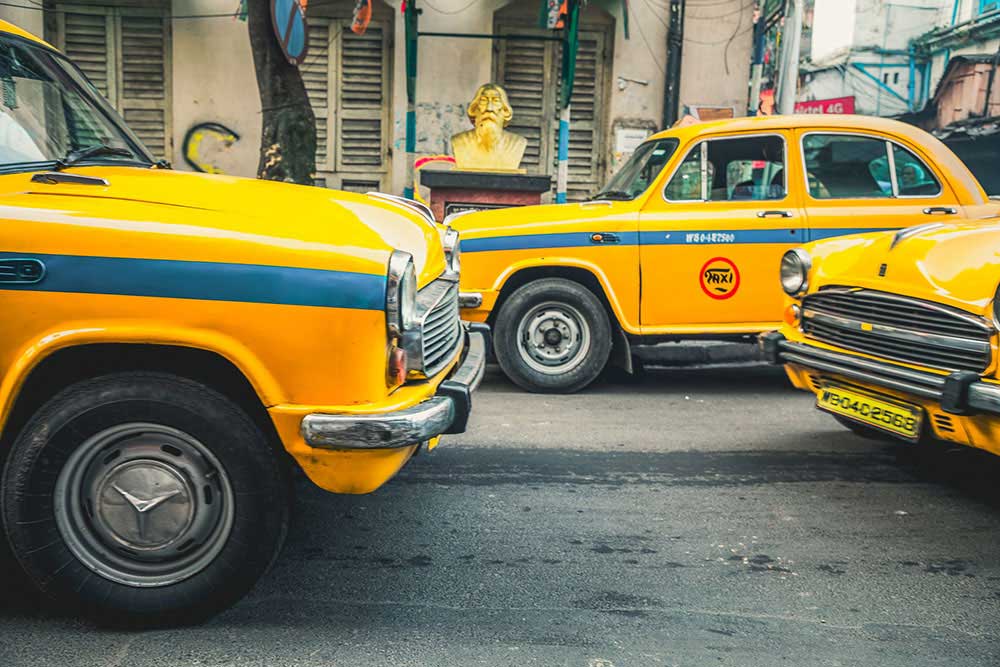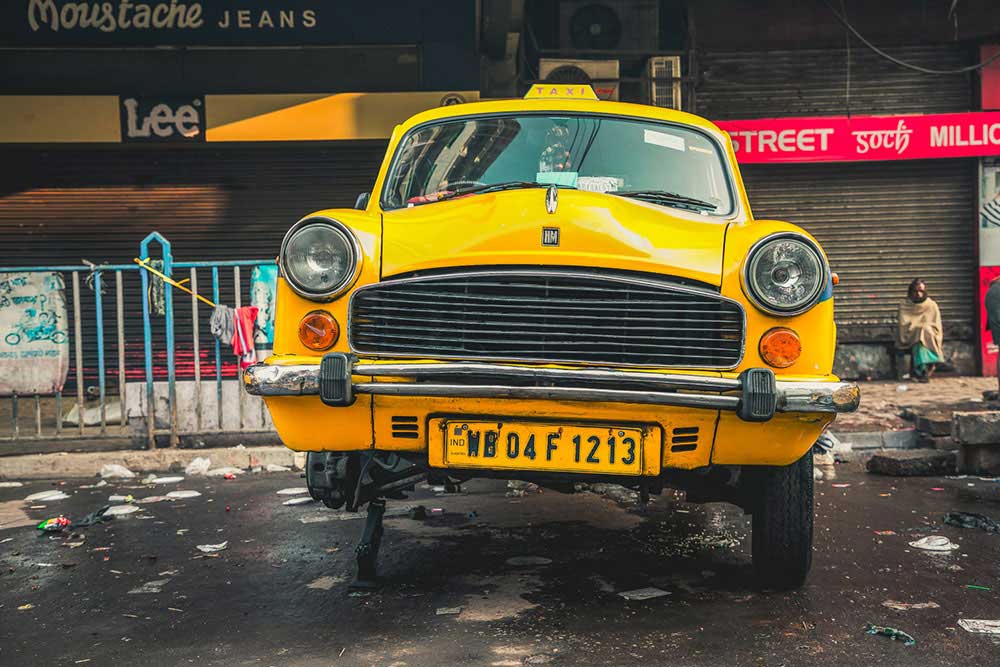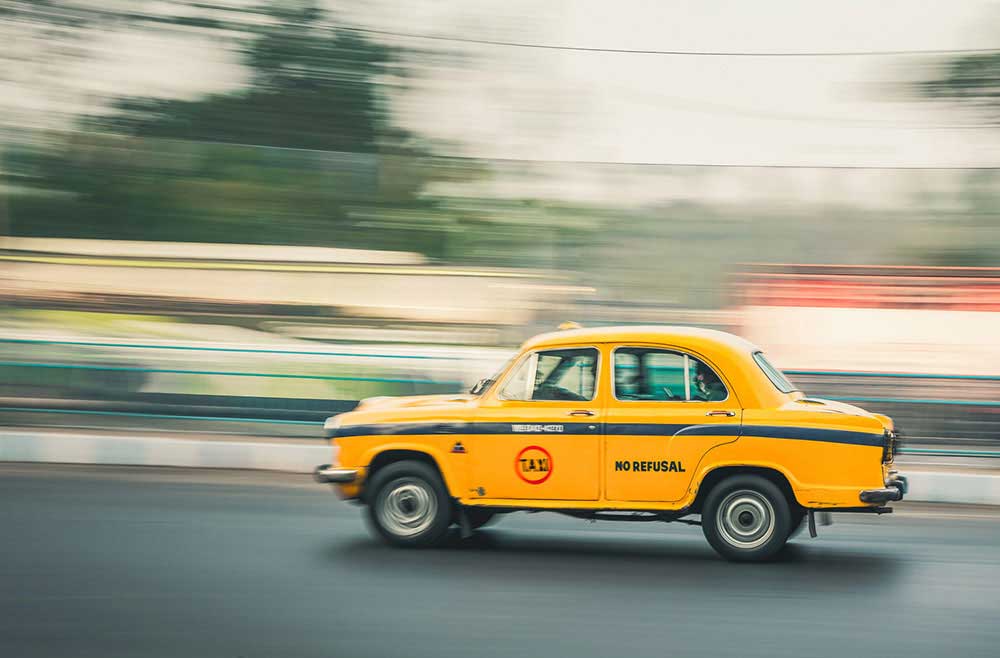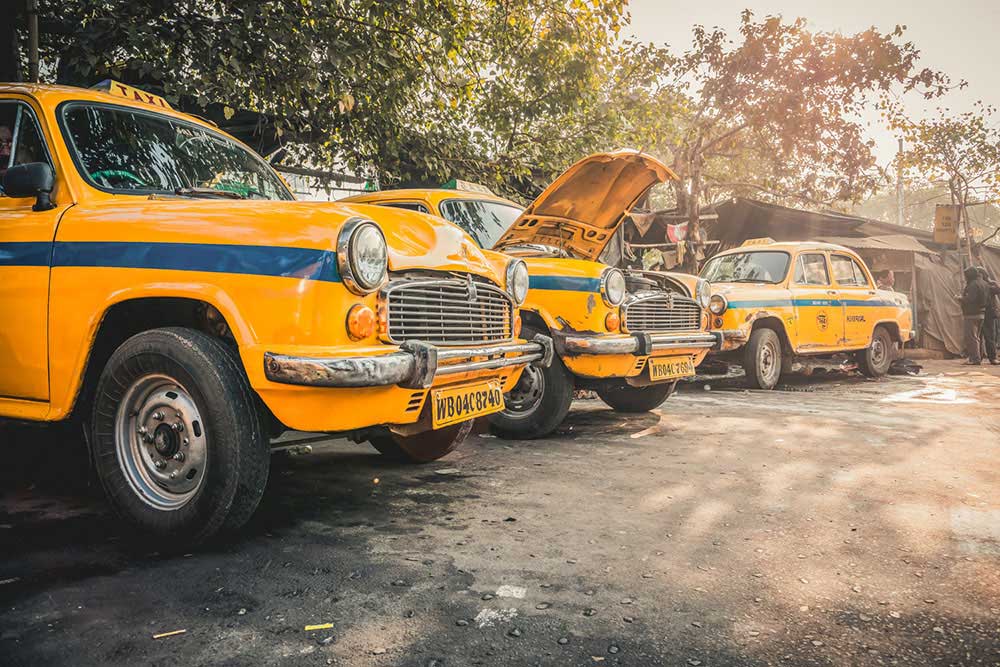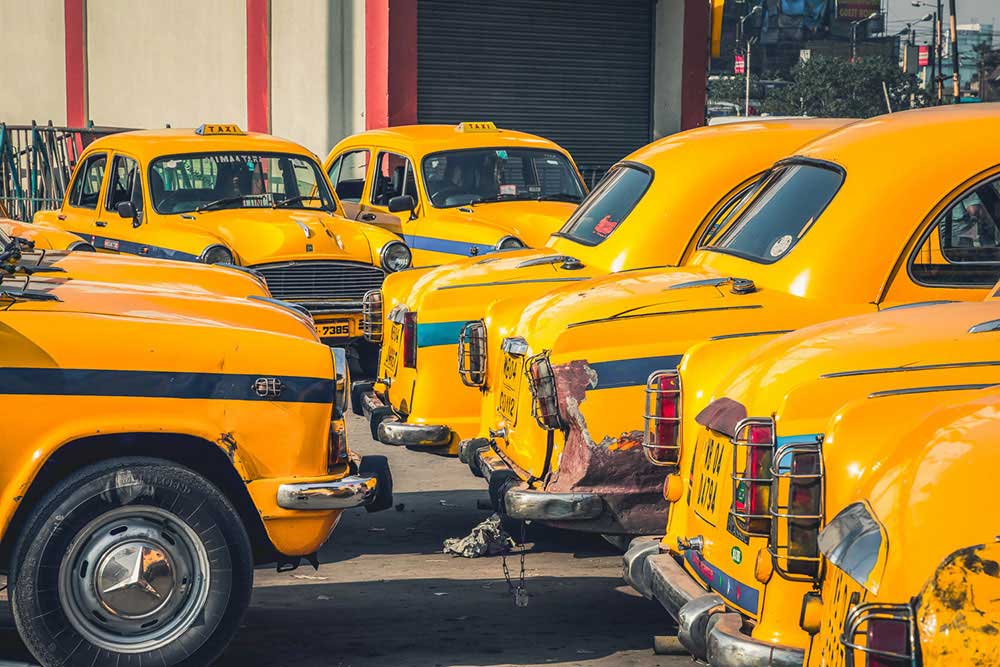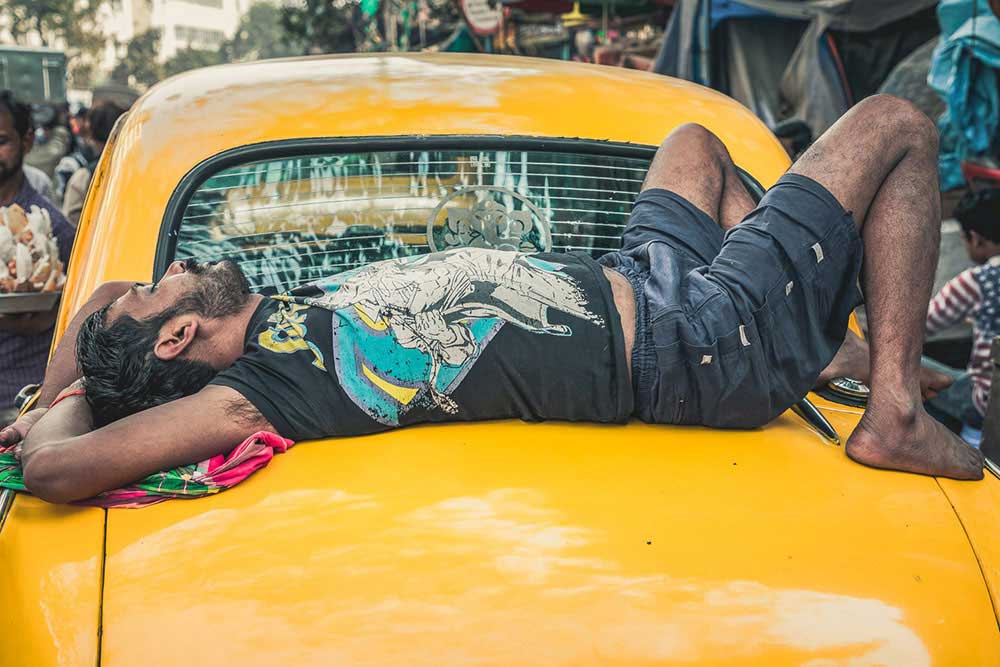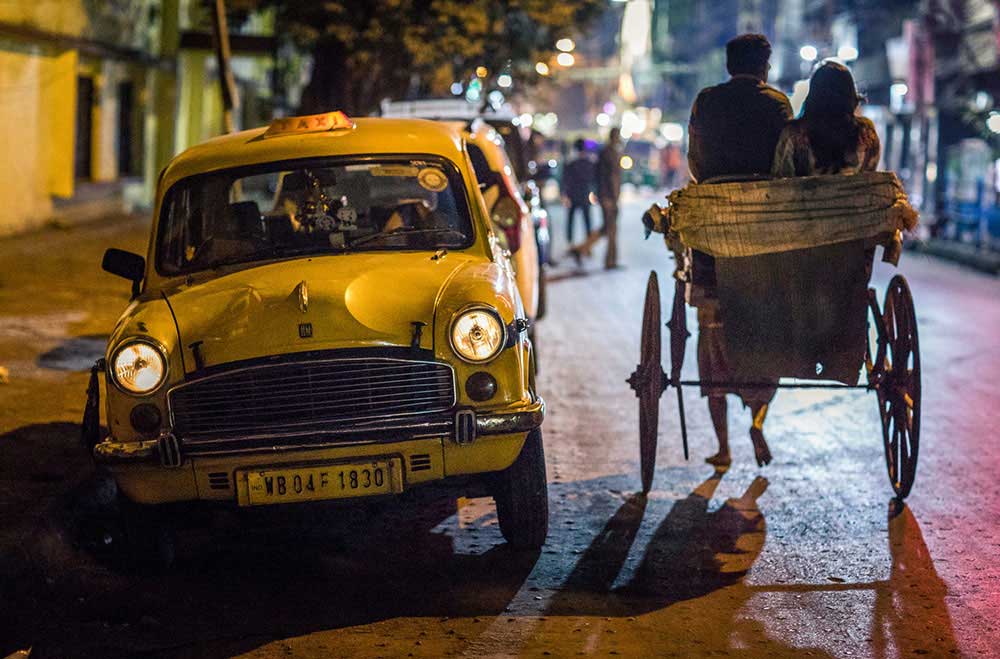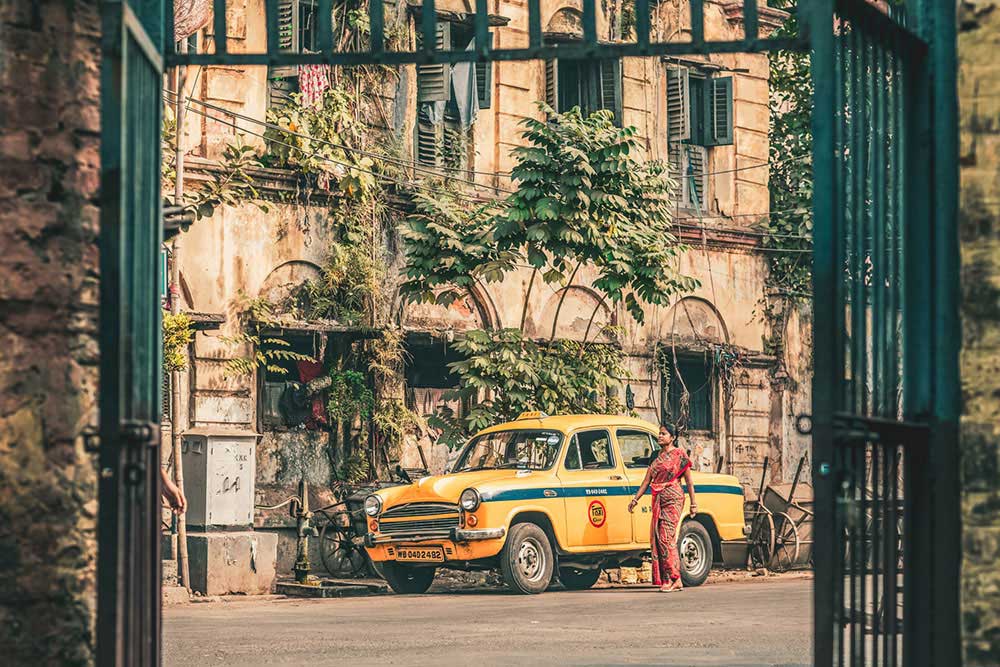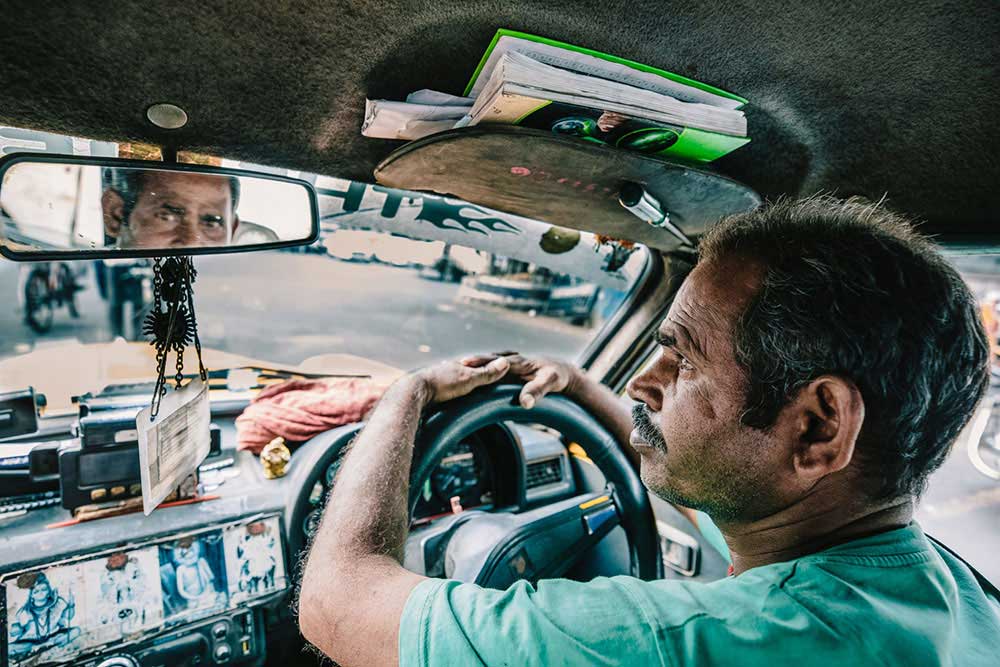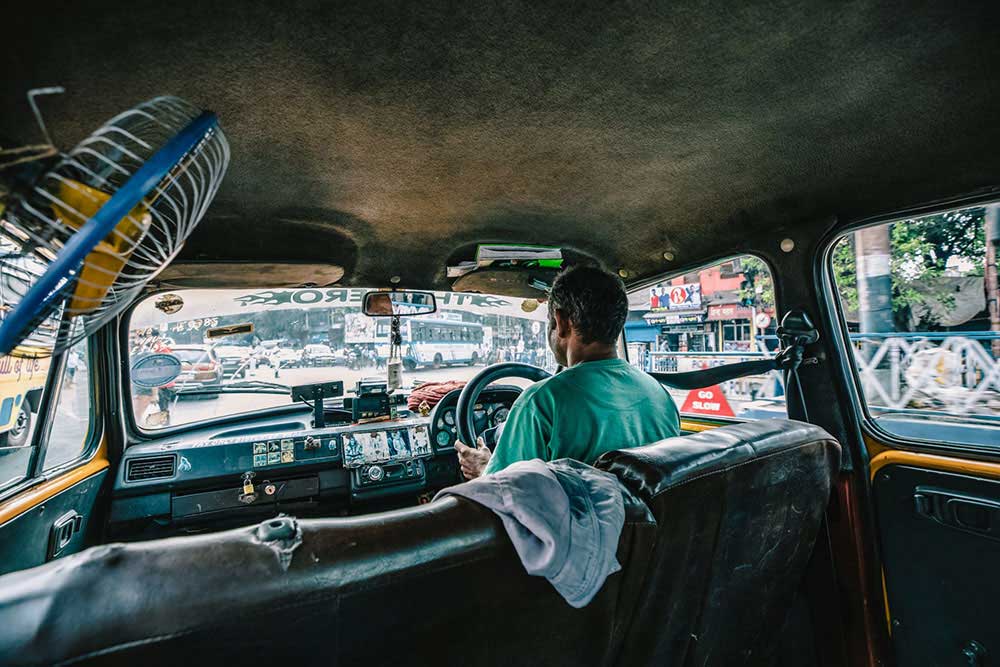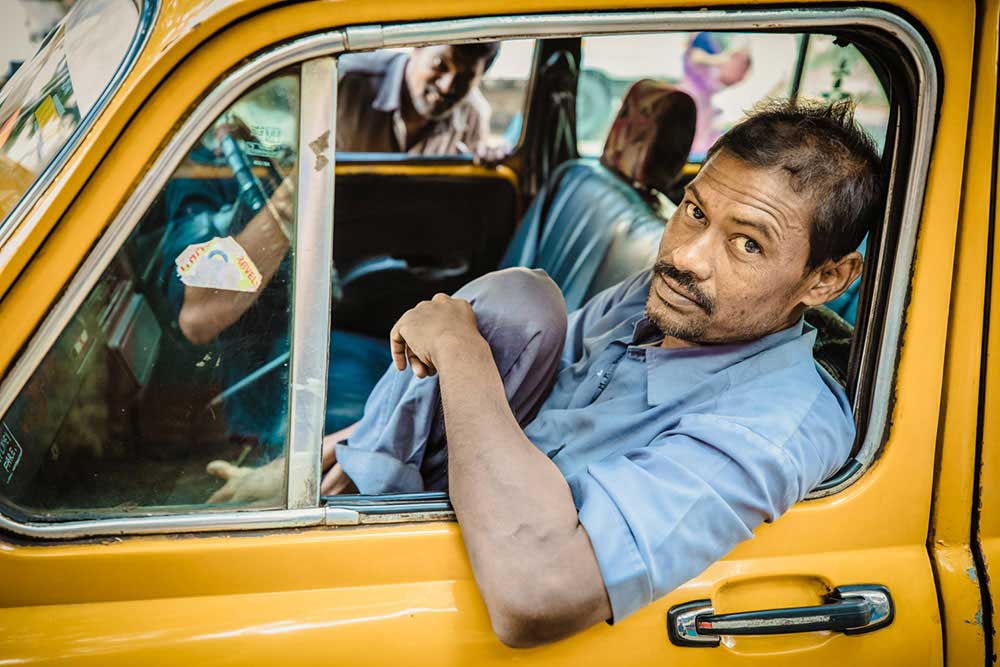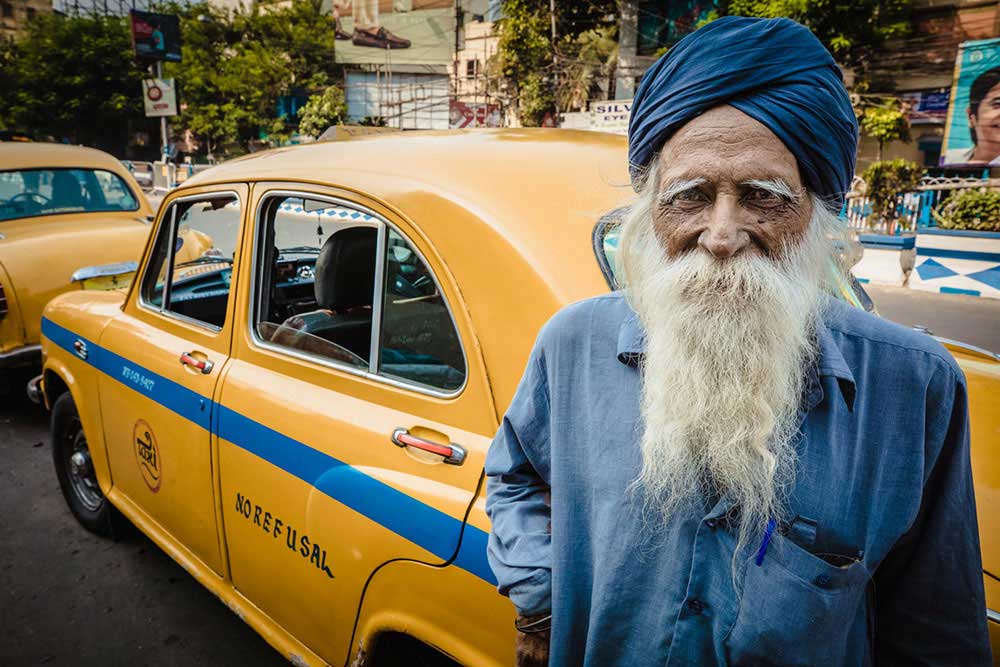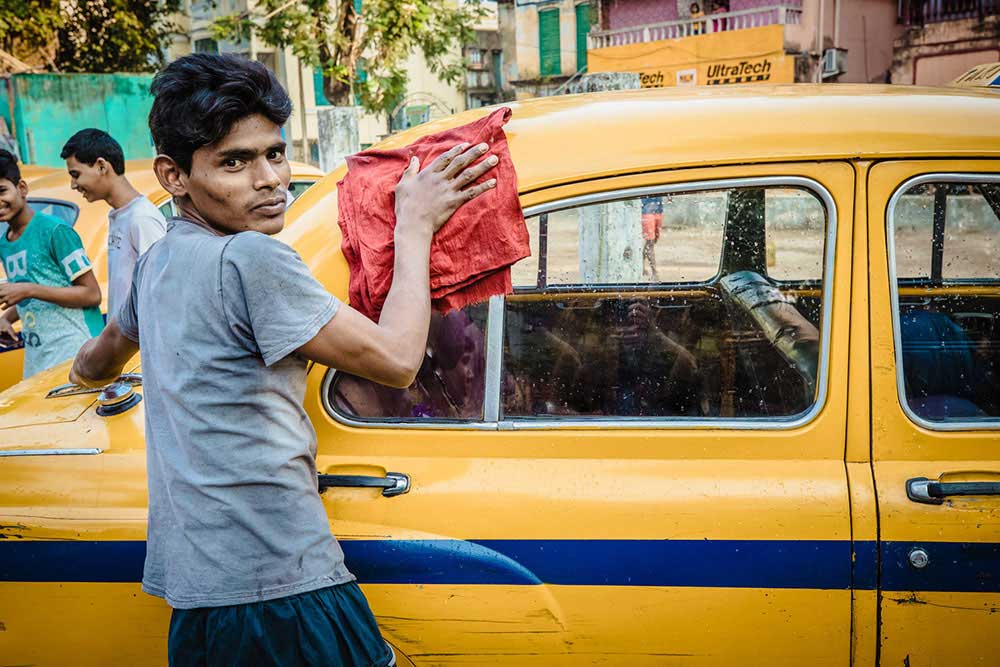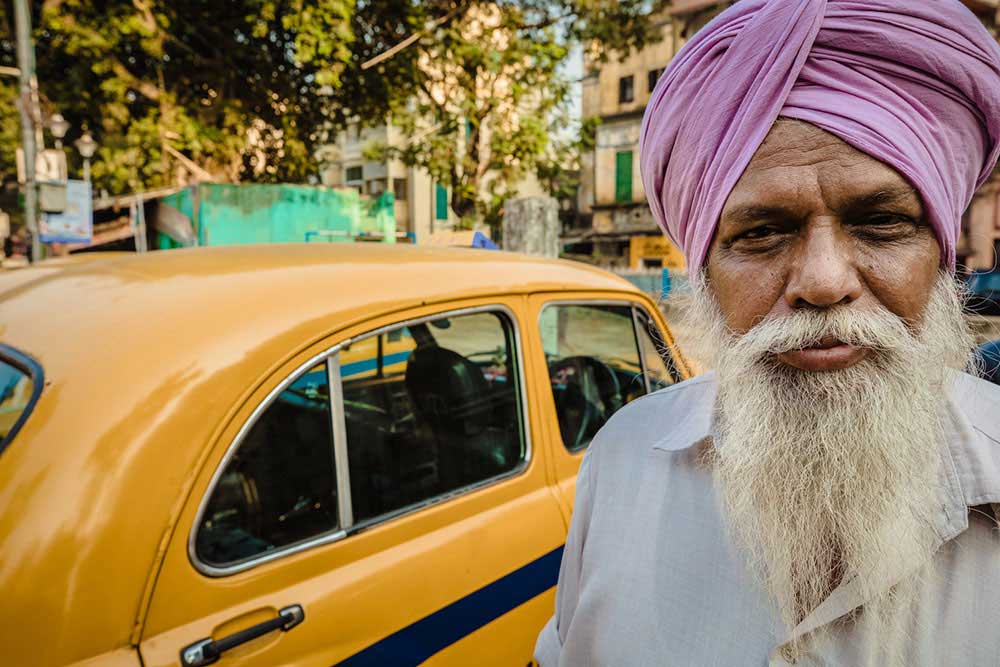24 hours waiting. A full day waiting in the parking lot before they can pick up a passenger.
The moment you get outside of the airport in Kolkata, in the south eastern side of India, you are overwhelmed with never ending lines of the “Calcutta Yellow Cab”. Hundreds of cars are on the outside parking lot. Most of the drivers have been there “only 1 day, sir”, if they are lucky.
The cars are considered a classic to modern day standard, but in Kolkata they are a daily driver and an Icon of the city.The Indian company Hindustan Motors started production in 1958 and the car is based on the British Morris Oxford. With the spacious interior, strongest diesel engine, the durability and the easy mechanics, made it the favorite taxi cab for decades. The car remained in production until 2014, and is currently phased out by more fuel efficient and environmentally friendlier cars.
What caught my interest, besides the funny shape of the car, is the lives of the drivers. Most of the drivers come from an adjacent province called Bihar, known for its poverty. They take the 6 hour bus drive to the big city, and rent a car for a month, or longer. Since the rents are expensive, and they are here to make money, they work up to 20 hours a day, and longer if needed. Some of them sleep in the car, live in the car. In some parts of the world they call this “van life”, here they call it survival. Other drivers have a bed in a dorm, many of them sharing their bed with another cab driver and take turns sleeping.
In my ongoing project “Kolkata Taxi”, I try to document the last remaining drivers and their life.



